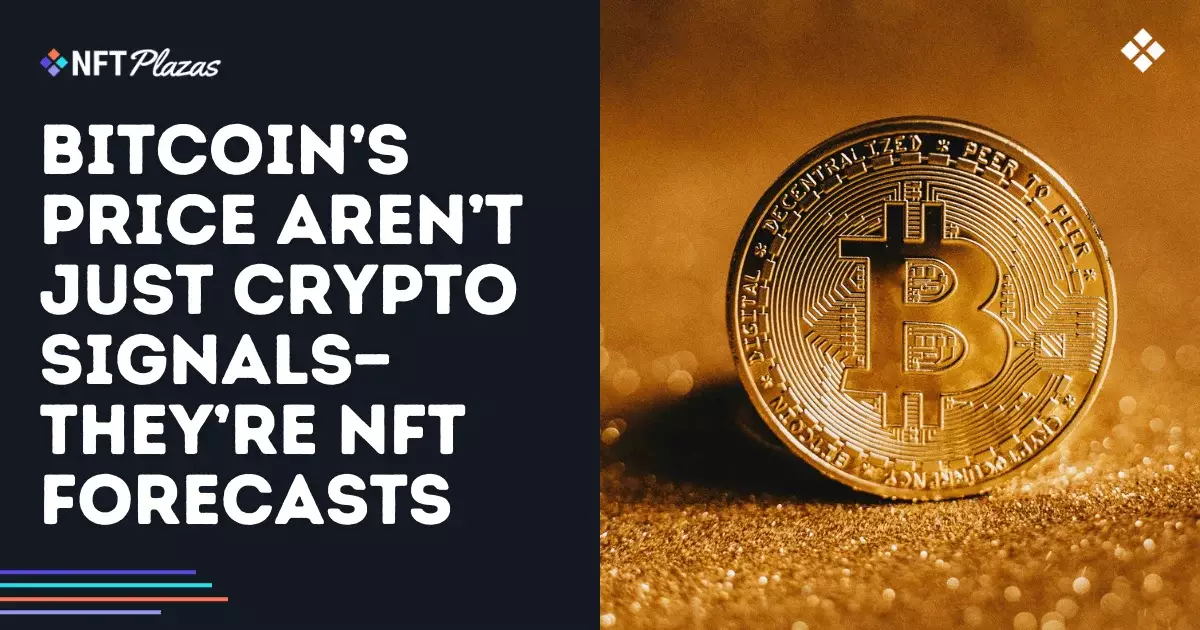In the digital frontier of cryptocurrency, Bitcoin is not just a player—it’s the beating heart that influences every pulse of the NFT market. The correlation between the two is strikingly evident; when Bitcoin experiences a tumultuous shift, the NFT sector often mirrors this volatility. The reactions are astonishing: a mere fluctuation in Bitcoin’s price can lead to a significant ripple effect, altering the landscape for NFT collectors and traders alike. The physical and psychological connection we share with Bitcoin can be likened to an economic analgesic—a momentary euphoria quickly turns to distress as market sentiments react violently to the fluctuations.
The Bull Market Bonanza and Its Aftermath
Consider the explosive rise of Bitcoin in early 2021 when it surpassed the $40,000 mark, simultaneously igniting a wildfire of interest in NFTs. This monumental shift in Bitcoin paved the way for historic sales, such as Beeple’s revolutionary digital artwork fetching an astonishing $69 million at Christie’s. The NFT sector became a sizzling hotbed of speculation and hype, driven largely by Bitcoin’s bullish trends. Yet, this narrative is not solely one of ascendance; it reveals a sobering reality about market dependency. The latter part of 2021 showed Bitcoin peaking at nearly $64,000, further inflating the values of collections like Bored Ape Yacht Club and Art Blocks, creating a perfect storm for speculative bubbles.
When that bubble burst, the story morphed into one of stark contrasts. Mid-2022 saw Bitcoin’s value plummet below $20,000, dragging NFT sales volume down by over 75% within mere months. This dramatic decline was a sobering reminder of just how interconnected these two markets are—like a house of cards, when one card is pulled, the entire structure threatens to collapse. The NFT landscape, once thriving under the illusion of invulnerability, was left reeling.
The Predictive Power of Bitcoin’s Movements
To comprehend the dynamics of the NFT space, one must examine Bitcoin not merely as a currency but as a sentiment indicator—its fluctuations often serve as premonitions for NFT enthusiasts and investors. Users are leveraging analytics tools and historical data to gauge broader market trends, seeking to spot early signals that indicate potential shifts. The implication here is profound; savvy traders aren’t just scanning NFT listings, they are scrutinizing Bitcoin charts to decode market cycles. Essentially, if you’re not paying attention to Bitcoin, you stand to lose your foothold in the fast-paced world of NFTs.
The Emotional Rollercoaster of Market Sentiments
As the Fear and Greed Index shows, emotions are irrevocably tied to market behavior. With each bullish rally or bearish downturn, sentiment shifts dangerously—investors swing from greed to fear faster than one can blink. This emotional volatility is first reflected in Bitcoin’s price movements, impacting NFT sales in real-time. Traders experience exhilarating highs and catastrophic lows, and understanding this emotional cadence is critical for anyone pinning their hopes on NFTs.
Bitcoin is the alarm bell that helps to map out the chaotic landscape of NFTs. Being oblivious to its signals may lead to harsh consequences—a lesson for those who aim to navigate this treacherous terrain of digital assets. By linking one’s strategy to Bitcoin’s trends, an NFT trader can glean invaluable insights into forthcoming challenges or opportunities that may lie ahead. The truth is simple: to understand NFTs, you must start with Bitcoin, for it is the key that unlocks the door to this complex and unpredictable digital domain.


Leave a Reply